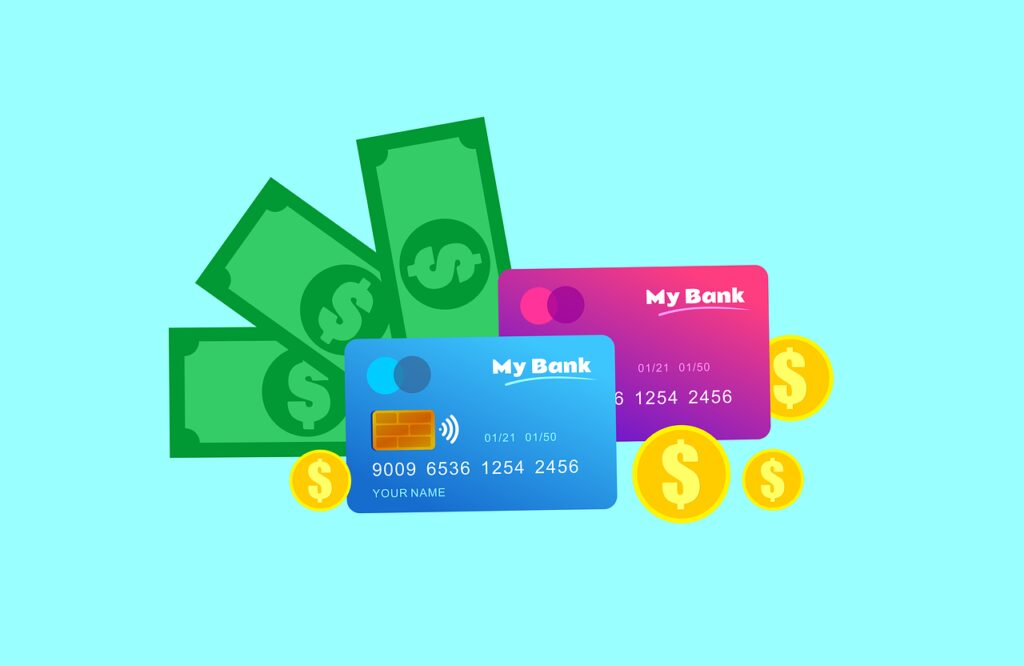Credit card churning has become a popular strategy among savvy consumers aiming to maximize rewards and benefits from their credit cards. While it can offer substantial advantages, it also comes with notable risks and potential pitfalls.
This comprehensive guide will delve into what credit card churning entails, explore its benefits, weigh the risks, and provide practical tips for navigating this strategy wisely.
We’ll also share how our team of experts developed these insights to help you make informed decisions.
What is Credit Card Churning?
Credit card churning is the practice of opening and closing multiple credit card accounts within a short period to take advantage of sign-up bonuses, promotional offers, and rewards. The strategy typically involves:
- Research and Application: Identifying credit cards with lucrative sign-up bonuses or rewards offers and applying for them.
- Meeting Spending Requirements: Spending a required amount within a specified timeframe to earn the bonus or rewards.
- Reaping Rewards: Receiving points, cash back, or travel miles once the spending threshold is met.
- Evaluating and Canceling: Assessing whether the benefits outweigh the annual fees and canceling the card if necessary.
The goal of churning is to accumulate rewards faster than using a single credit card, leveraging various offers and promotions.

Should I Try Credit Card Churning?
Whether credit card churning is right for you depends on several factors:
- Financial Health: Ensure you have a stable income and a good credit score. Churning requires meeting spending thresholds and managing multiple credit accounts.
- Credit Management Skills: If you’re organized and diligent about tracking deadlines, fees, and spending limits, churning may be feasible. Poor management can lead to missed payments and damaged credit.
- Long-Term Goals: Consider how churning aligns with your long-term financial goals. For some, sustainable rewards from fewer cards may be more beneficial than constantly opening and closing accounts.
Weighing these factors will help you decide if churning fits your financial strategy and lifestyle.
Pros and Cons of Credit Card Churning
Pros:
- Maximize Rewards and Benefits:
- Sign-Up Bonuses: Credit cards often offer substantial bonuses for meeting initial spending requirements, boosting your rewards quickly.
- Rewards Multipliers: Churning allows you to benefit from high rewards rates in specific categories like travel, dining, or groceries.
- Access to Premium Benefits:
- Travel Perks: Enjoy travel-related benefits such as complimentary travel insurance, airport lounge access, and no foreign transaction fees.
- Purchase Protections: Benefit from extended warranties, purchase protection, and return protection.
- Build Credit History:
- Diversified Credit Accounts: Managing multiple credit accounts can diversify your credit profile, potentially improving your credit score.
- Increased Credit Limit: Higher credit limits from new accounts can enhance your credit utilization ratio.

Cons:
- Potential Impact on Credit Score:
- Hard Inquiries: Frequent applications can lead to multiple hard inquiries on your credit report, temporarily lowering your credit score.
- Credit Age: New accounts decrease the average age of your credit accounts, which may negatively affect your score.
- Credit Utilization: Increased credit limits can raise your utilization ratio if you accumulate debt, impacting your credit score.
- Annual Fees and Costs:
- High Fees: Some cards have significant annual fees that might outweigh the rewards if not managed properly.
- Missed Payments: Managing multiple cards increases the risk of missed payments, leading to late fees and potential credit score damage.
- Complexity and Time Commitment:
- Tracking Rewards: Managing several cards requires careful tracking of spending limits, reward categories, and bonus deadlines.
- Account Management: Keeping track of card openings, closures, and fee schedules can be complex and time-consuming.
- Potential for Fraud:
- Identity Theft: Opening multiple accounts can increase your risk of identity theft if personal information is not securely managed.
- Fraudulent Charges: Monitoring for unauthorized transactions becomes more challenging with numerous accounts.
How to Navigate Credit Card Churning Wisely
1. Evaluate Your Financial Situation
Before diving into credit card churning, assess your financial health:
- Stable Income: Ensure you have a stable income to meet spending requirements and handle multiple cards.
- Good Credit Score: A solid credit score is crucial for qualifying for the best offers and avoiding potential issues.
- Budget: Maintain a budget that allows for the required spending without incurring debt.
2. Research and Choose Wisely
- Compare Offers: Look for credit cards with valuable rewards, low annual fees, and favorable terms. Use comparison websites and reviews to identify the best options.
- Check Eligibility: Verify that you meet the eligibility criteria for the cards you’re considering and avoid applying for multiple cards simultaneously.
3. Manage Your Accounts Carefully
- Set Reminders: Use reminders or apps to track application deadlines, spending requirements, and cancellation dates.
- Monitor Your Credit: Regularly review your credit report and score to track the impact of your churning activities and address any issues.
4. Use Rewards Strategically
- Redeem Wisely: Maximize the value of your rewards by redeeming them for significant purchases or travel.
- Avoid Overuse: Don’t let the pursuit of rewards lead to overspending or accumulating unnecessary debt.
5. Consider Long-Term Effects
- Plan for the Future: Evaluate how churning fits with your long-term financial goals. It may be more beneficial to focus on a few cards with sustainable rewards rather than constantly opening and closing accounts.
- Maintain Good Credit Habits: Practice good credit habits, such as timely payments and low credit utilization, to ensure that churning does not harm your credit health.
How Credit Card Churning Affects Your Credit Report
Impact on Credit Score:
- Credit Inquiries: Each new application results in a hard inquiry, which can temporarily decrease your credit score.
- Credit History Length: Frequent new accounts shorten the average age of your credit history, potentially impacting your score.
- Credit Utilization Rate: While new credit increases your total available credit, it can also impact your utilization rate if balances are not managed carefully.

Changes in Credit Accounts:
- New Accounts: Opening multiple new accounts can affect your credit mix and the total number of accounts reported on your credit report.
- Closed Accounts: Canceling cards after earning rewards can affect your credit utilization ratio and credit history length.
Tips for Responsible Credit Card Churning
1. Evaluate Your Financial Situation
Before diving into credit card churning, assess your financial health:
- Stable Income: Ensure you have a stable income to meet spending requirements and handle multiple cards.
- Good Credit Score: A solid credit score is crucial for qualifying for the best offers and avoiding potential issues.
- Budget: Maintain a budget that allows for the required spending without incurring debt.
2. Research and Choose Wisely
- Compare Offers: Look for credit cards with valuable rewards, low annual fees, and favorable terms. Use comparison websites and reviews to identify the best options.
- Check Eligibility: Verify that you meet the eligibility criteria for the cards you’re considering and avoid applying for multiple cards simultaneously.

3. Manage Your Accounts Carefully
- Set Reminders: Use reminders or apps to track application deadlines, spending requirements, and cancellation dates.
- Monitor Your Credit: Regularly review your credit report and score to track the impact of your churning activities and address any issues.
4. Use Rewards Strategically
- Redeem Wisely: Maximize the value of your rewards by redeeming them for significant purchases or travel.
- Avoid Overuse: Don’t let the pursuit of rewards lead to overspending or accumulating unnecessary debt.
5. Consider Long-Term Effects
- Plan for the Future: Evaluate how churning fits with your long-term financial goals. It may be more beneficial to focus on a few cards with sustainable rewards rather than constantly opening and closing accounts.
- Maintain Good Credit Habits: Practice good credit habits, such as timely payments and low credit utilization, to ensure that churning does not harm your credit health.
Our Team’s Journey: How We Came Up With These Ideas
Our team’s journey into the world of credit card churning began with a shared interest in understanding how consumers could maximize rewards and benefits from their credit cards. We each brought unique experiences and insights from managing our credit card accounts and leveraging various rewards programs.
Initial Research and Insights
Our initial research involved studying different aspects of credit card churning, including rewards programs, impacts on credit scores, and management strategies. We gathered data from case studies, industry reports, and personal experiences to develop a well-rounded understanding.
Practical Experiences
We reviewed real-life examples of both successful and challenging credit card churning experiences. This helped us identify effective strategies and potential pitfalls, providing a balanced view of the benefits and risks associated with churning.
Brainstorming and Strategy Development
In our brainstorming sessions, we focused on creating a guide that balances the advantages of credit card churning with practical advice on mitigating risks. We developed strategies based on our combined experiences, industry best practices, and thorough research.
Final Insights
Combining our findings, we crafted this comprehensive guide to help you navigate credit card churning wisely. Our goal is to equip you with the knowledge to maximize rewards while avoiding common pitfalls, ensuring a balanced approach to this strategy.
Conclusion
Credit card churning can be an effective strategy for maximizing rewards and benefits if executed carefully. By understanding the benefits, risks, and practical tips outlined in this guide, you can make informed decisions that align with your financial goals.
While the allure of sign-up bonuses and rewards is tempting, responsible credit management is crucial to maintaining a healthy credit profile and achieving long-term financial success.


Leave a Reply